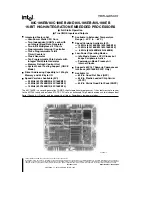
PL-2 Analog Peak Limiter Manual
Features
· Two independent channels with stereo link
· JFET (hard) and MOSFET (soft) peak limiting modes
· Limiter circuit 'switched out' of the signal path when below threshold
· Precise readout of peak reduction
· Stepped input and output gain controls ideal for mastering or session recall
· I/O gain stages can be bypassed to shorten signal path
· Multiple units can be linked for multi-channel applications
· Active-balanced inputs and outputs
· Gold-plated switch contacts and I/O connectors
· Audiophile-grade passive components
· 120V or 240V ac voltage switch on the rear panel.
Introduction
Thank you for purchasing the Pendulum PL-2, a stand-alone two channel
version of the very popular peak limiter in our Quartet II Tube Recording
Channel. It uses a novel approach to brickwall limiting in the analog domain,
one that is fast enough to prevent digital overs without using time delay or
phase-shift delay techniques. This allows us to keep the analog signal path
short, and keep the limiting circuit 'switched out' of the signal path below the
peak limiting threshold. Distortion for all levels below the limiting threshold is
low, and does not rise as the threshold for limiting is approached. Unlike
analog peak clippers, which chop off the top and bottom of the waveform, our
limiter retains dynamic information at the top of the peak. And unlike digital
limiters, there is no latency, so it can be used as an insert on an analog mix!
The PL-2 has two modes of peak limiting, using either junction field-effect
transistors (JFET) or metal-oxide semiconductor field effect transistors
(MOSFET) as the control elements. While both are equally capable of
brickwall limiting, each type has its own characteristic sound. The JFET tends
to be a stiffer, harder mode of limiting, while the MOSFET has a softer, more
compliant response. The resulting waveforms look different, and each device
has its own characteristic sound.
The two channels for the PL-2 can be linked for stereo or used independently.
Multiple units can be linked via the Master/Slave jacks on the rear panel,
making it ideal for multi-channel processing.
In addition, Input and Output gain controls allow the user to scale the gain
structure for a wide range of applications, from driving the front end of an
A/D converter at +20 dBu, to inserting it as an effect into a +4 dBu patch bay.
The I/O gain stages can be bypassed globally to shorten the signal path for
mastering applications. Each channel also has an expanded 13 segment LED
display that accurately indicates peak reduction.
Unpacking

























